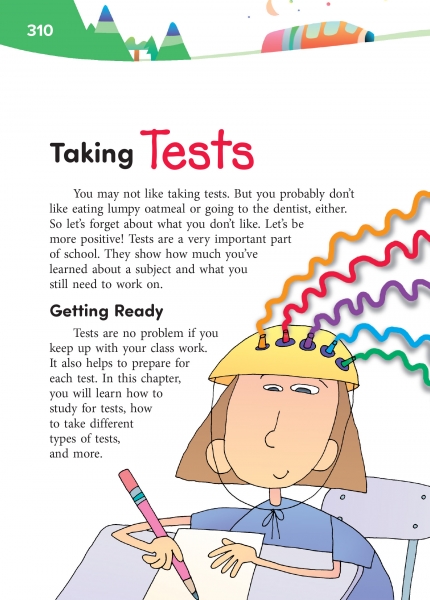Page 310 from

Start-Up Activity
Ask students how many of them would like to be taller. (Most 3rd graders would!) Say you are going to measure everybody at the beginning of the week and at the end, and they'd better be taller. (Let students know that would be ridiculous and unfair. They can't do anything to make themselves grow taller in one week!)
Now say, "But you can do things to make yourselves grow smarter in one week." This chapter focuses on ways that students can improve their study habits and test performance so that, from the beginning of the week to the end, they have measurably grown.
Think About It
“I get a satisfaction from being tested and defeating the test.”
—Ashton Eaton

Start-Up Activity
Ask students how many of them would like to be taller. (Most 3rd graders would!) Say you are going to measure everybody at the beginning of the week and at the end, and they'd better be taller. (Let students know that would be ridiculous and unfair. They can't do anything to make themselves grow taller in one week!)
Now say, "But you can do things to make yourselves grow smarter in one week." This chapter focuses on ways that students can improve their study habits and test performance so that, from the beginning of the week to the end, they have measurably grown.
Think About It
“I get a satisfaction from being tested and defeating the test.”
—Ashton Eaton